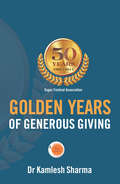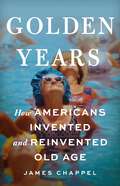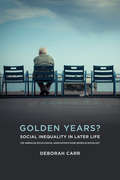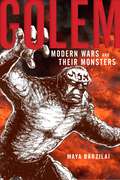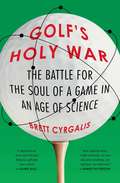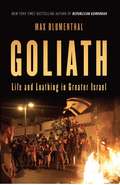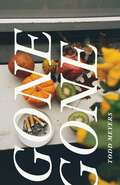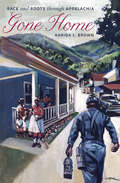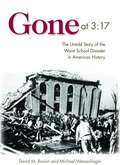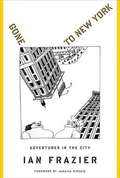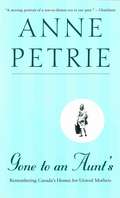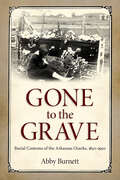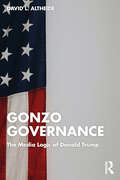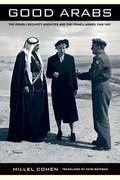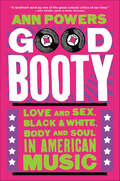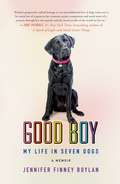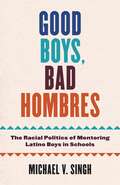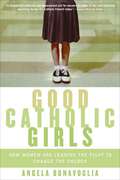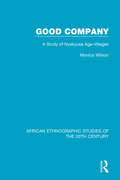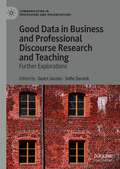- Table View
- List View
Golden Years of Generous Giving: Sugar Festival Association – Lautoka - Fiji
by Dr Kamlesh SharmaThe Sugar Festival Association is incorporated under the Charitable Trusts Act (Cap 67) of Fiji. Its main aim is to raise funds for charitable purposes by organising the annual Sugar Festival and undertake projects that benefit the community as a whole. The Lautoka Sugar Festival is one of the largest in Fiji and its origin goes back to early 1961 when the first Festival was organised by the Lautoka Junior Chamber of Commerce (Lautoka Jaycees). The Festival continued as an annual event under the stewardship of Lautoka Jaycees until 1980 when it was announced that the running of the Festival would be handed over to a public committee. This resulted in the establishment of the Sugar Festival Association that is now responsible for organising the annual Festival on the foundation of generous goodwill and commitment of its volunteers and supporters.
Golden Years: How Americans Invented and Reinvented Old Age
by James ChappelAn &“essential&” (The New Republic) account of the history of old age in modern America, showing how we created unprecedented security for some and painful uncertainty for others On farms and in factories, Americans once had little choice but to work until death. As the nation prospered, a new idea was born: the right to a dignified and secure old age. That project has benefited millions, but it remains incomplete—and today it&’s under siege. In Golden Years, historian James Chappel shows how old age first emerged as a distinct stage of life and how it evolved over the last century, shaped by politicians&’ choices, activists&’ demands, medical advancements, and cultural models from utopian novels to The Golden Girls. Only after World War II did government subsidies and employer pensions allow people to retire en masse. Just one generation later, this model crumbled. Older people streamed back into the workforce, and free-market policymakers pushed the burdens of aging back onto older Americans and their families. We now confront an old age mired in contradictions: ever longer lifespans and spiraling health-care costs, 401(k)s and economic precarity, unprecedented opportunity and often disastrous instability. As the population of older Americans grows, Golden Years urges us to look to the past to better understand old age today—and how it could be better tomorrow.
Golden Years?: Social Inequality in Later Life (American Sociological Association's Rose Series)
by Deborah CarrThanks to advances in technology, medicine, Social Security, and Medicare, old age for many Americans is characterized by comfortable retirement, good health, and fulfilling relationships. But there are also millions of people over 65 who struggle with poverty, chronic illness, unsafe housing, social isolation, and mistreatment by their caretakers. What accounts for these disparities among older adults? Sociologist Deborah Carr’s Golden Years? draws insights from multiple disciplines to illuminate the complex ways that socioeconomic status, race, and gender shape the nearly every aspect of older adults’ lives. By focusing on an often-invisible group of vulnerable elders, Golden Years? reveals that disadvantages accumulate across the life course and can diminish the well-being of many. Carr connects research in sociology, psychology, epidemiology, gerontology, and other fields to explore the well-being of older adults. On many indicators of physical health, such as propensity for heart disease or cancer, black seniors fare worse than whites due to lifetimes of exposure to stressors such as economic hardships and racial discrimination and diminished access to health care. In terms of mental health, Carr finds that older women are at higher risk of depression and anxiety than men, yet older men are especially vulnerable to suicide, a result of complex factors including the rigid masculinity expectations placed on this generation of men. Carr finds that older adults’ physical and mental health are also closely associated with their social networks and the neighborhoods in which they live. Even though strong relationships with spouses, families, and friends can moderate some of the health declines associated with aging, women—and especially women of color—are more likely than men to live alone and often cannot afford home health care services, a combination that can be isolating and even fatal. Finally, social inequalities affect the process of dying itself, with white and affluent seniors in a better position to convey their end-of-life preferences and use hospice or palliative care than their disadvantaged peers. Carr cautions that rising economic inequality, the lingering impact of the Great Recession, and escalating rates of obesity and opioid addiction, among other factors, may contribute to even greater disparities between the haves and the have-nots in future cohorts of older adults. She concludes that policies, such as income supplements for the poorest older adults, expanded paid family leave, and universal health care could ameliorate or even reverse some disparities. A comprehensive analysis of the causes and consequences of later-life inequalities, Golden Years? demonstrates the importance of increased awareness, strong public initiatives, and creative community-based programs in ensuring that all Americans have an opportunity to age well.
Golem: Modern Wars and Their Monsters
by Maya Barzilai2017 Jordan Schnitzer Book Award in Jewish Literature and LinguisticsHonorable Mention, 2016 Baron Book Prize presented by AAJRA monster tour of the Golem narrative across various cultural and historical landscapesIn the 1910s and 1920s, a “golem cult” swept across Europe and the U.S., later surfacing in Israel. Why did this story of a powerful clay monster molded and animated by a rabbi to protect his community become so popular and pervasive? The golem has appeared in a remarkable range of popular media: from the Yiddish theater to American comic books, from German silent film to Quentin Tarantino movies. This book showcases how the golem was remolded, throughout the war-torn twentieth century, as a muscular protector, injured combatant, and even murderous avenger. This evolution of the golem narrative is made comprehensible by, and also helps us to better understand, one of the defining aspects of the last one hundred years: mass warfare and its ancillary technologies.In the twentieth century the golem became a figure of war. It represented the chaos of warfare, the automation of war technologies, and the devastation wrought upon soldiers’ bodies and psyches. Golem: Modern Wars and Their Monsters draws on some of the most popular and significant renditions of this story in order to unravel the paradoxical coincidence of wartime destruction and the fantasy of artificial creation. Due to its aggressive and rebellious sides, the golem became a means for reflection about how technological progress has altered human lives, as well as an avenue for experimentation with the media and art forms capable of expressing the monstrosity of war.
Golf's Holy War: The Battle for the Soul of a Game in an Age of Science
by Brett CyrgalisJust as Michael Lewis&’s Moneyball captured baseball at a technological turning point, Brett Cyrgalis&’s Golf&’s Holy War takes us inside golf&’s clash between its beloved artistic tradition and its analytic future. The world of golf is at a crossroads. As technological innovations displace traditional philosophies, the golfing community has splintered into two deeply combative factions: the old-school teachers and players who believe in feel, artistry, and imagination, and the technical minded who want to remake the game around data. In Golf&’s Holy War, Brett Cyrgalis takes readers inside the heated battle playing out from weekend hackers to PGA Tour pros. At the Titleist Performance Institute in Oceanside, California, golfers clad in full-body sensors target weaknesses in their biomechanics, while others take part in mental exercises designed to test their brain&’s psychological resilience. Meanwhile, coaches like Michael Hebron purge golfers of all technical information, tapping into the power of intuitive physical learning by playing rudimentary games. From historic St. Andrews to manicured Augusta, experimental communes in California to corporatized conferences in Orlando, William James to Ben Hogan to theoretical physics, the factions of the spiritual and technical push to redefine the boundaries of the game. And yet what does it say that Tiger Woods has orchestrated one of the greatest comebacks in sports history without the aid of a formal coach? But Golf&’s Holy War is more than just a book about golf—it&’s a story about modern life and how we are torn between resisting and embracing the changes brought about by the advancements of science and technology. It&’s also an exploration of historical legacies, the enriching bonds of education, and the many interpretations of reality.
Goliath: Life and Loathing in Greater Israel
by Max BlumenthalAn explosive expos(r) into the radical right-wing state of Israeli politics from bestselling author of "Republican Gomorrah. "
Golondrinas: Un barrio marginal del tamaño del mundo
by Emiliano Ruiz ParraGolondrinas es un barrio marginal de Ecatepec, en la periferia de la Ciudad de México.y en el imaginario mexicano, Ecatepec es el infierno. La cuestión es que Golondrinas es el futuro del mundo: en 2050, nueve de cada 10 mexicanos vivirán en slums como éste. Es el pasado, el presente y el futuro de un planeta que se empobrece, se precariza y se sobrecalienta. Hay investigaciones que documentan que la transformación de la Tierra en un gran barrio marginal es un cambio tan importante como la transición al Neolítico o la Revolución Industrial, pero pasará inadvertida en las grandes discusiones intelectuales.Como sea, durante el tiempo que tardes en leer este libro, 25 mil personas habrán migrado hacia algún barrio marginal como Golondrinas. Ésta es la historia.
Gomorra: Un viaje al imperio económico y al sueño de poder de la Camorra (Folio Ser. #Vol. 37986)
by Roberto SavianoHace diez años, la publicación de Gomorra conmocionó al mundo y cambió para siempre la vida de Roberto Saviano. Una década más tarde, Debate relanza el libro incluyendo un nuevo prólogo conmemorativo del autor. Este increíble y fascinante relato real es un viaje al imperio empresarial y delictivo de la Camorra, que comienza y termina bajo el signo de las mercancías. Las mercancías «frescas», bajo las formas más variadas (videojuegos, relojes, ropa de marca) llegan al puerto de Nápoles, y para ser almacenadas y escondidas se sacan de los gigantescos contenedores e invaden antiguos palacetes, previamente vaciados por completo. Las mercancías muertas, procedentes de toda Italia y de media Europa, en forma de residuos químicos, restos tóxicos o fango, son vertidas abusivamente en los campos, donde envenenan, entre otros, a los mismos capos que erigen en esas tierras sus fastuosas y absurdas mansiones. Esta es hoy la Camorra (o el «Sistema», ya que casi nadie usa la palabra «Camorra»): por un lado, una organización empresarial con impresionantes ramificaciones por todo el planeta y una zona oscura siempre más extensa donde cuesta distinguir cuánta riqueza es producto directamente de la sangre y cuánta de simples operaciones financieras, y por el otro, un fenómeno criminal profundamente influido por los medios de comunicación y la sociedad del espectáculo, cuyos dirigentes imitan la manera de vestir y de moverse de las estrellas del cine y de las figuras míticas, de los gánsteres de Tarantino a las siniestras apariciones de El cuervo con Brandon Lee. En este libro absorbente y escrupulosamente documentado, Roberto Saviano ha reconstruido tanto la aterradora lógica económico-financiera y expansionista de los clanes napolitano y casertano como las febriles fantasías que suman el fatalismo mortuorio de los samuráis medievales japoneses. El resultado es un libro extraordinario y potente, apasionado y brutal, al tiempo objetivo y visionario, de investigación y literario, lleno de horrores e inquietantes fascinaciones; un libro narrado siempre en primera persona por este joven autor, nacido y criado en la tierra de la Camorra más dura. Reseñas:«Una reconstrucción minuciosa de los entresijos y el funcionamiento de la mafia napolitana. Detalles, fechas, nombres y apellidos dotan al texto de un realismo estremecedor.»El Periódico «Un dicho antiguo afirmaba que Nápoles era "un paradiso abitato da diavoli". De los diablos que habitan ese fascinante paraíso se ocupa Roberto Saviano en Gomorra.»José Luis García Martín, ABC
Gone Feral: Unruly Women and the Undoing of Normative Femininity
by Andrea O’Reilly;Casey O’Reilly-ConlinGone Feral: Unruly Women and the Undoing of Normative Femininity is an edited collection that probes the concept of ferality as it relates to and intersects with traditional, patriarchal dictates of normative femininity. The collection, appropriately, is a creative hodge-podge of feral representations and enactments that span multiple disciplines and social and existential dimensions and utilizes textual and intertextual analysis, creative non-fiction, feminist theory, critical animal studies, literature, media analysis, poetry, and artwork to explore the complex and contradictory nature of ferality as it exists within, outside, and on the margins of patriarchal culture. Ultimately, the collection seeks to understand and showcase how the concept of ferality may be understood as an inevitable consequence of, and potential resistance to, patriarchal culture and the dictates of normative femininity that have long snared feminine potential, caged feminine spirits, and neutered feminine authenticity.
Gone Gone
by Todd MeyersIn Gone Gone, Todd Meyers reckons with grief in the face of overdose death and with the afterlives of loss created by the opioid crisis. Through conversations with friends, lovers, and family members of those who are gone, Meyers brings readers into an inquiry about lives shared, told through tenderness and tragedy. Meyers seeks to find methods to record and convey the many experiences of grief in ways that do not simply consign sorrow to the world of drugs and addiction. Blending prose, poetry, and ethnography, Gone Gone is a lucid and devastating record that reminds readers that the grief felt by those who lose ones they love to overdose is varied and untamable.
Gone Home: Race and Roots through Appalachia
by Karida L. BrownSince the 2016 presidential election, Americans have witnessed countless stories about Appalachia: its changing political leanings, its opioid crisis, its increasing joblessness, and its declining population. These stories, however, largely ignore black Appalachian lives. Karida L. Brown's Gone Home offers a much-needed corrective to the current whitewashing of Appalachia. In telling the stories of African Americans living and working in Appalachian coal towns, Brown offers a sweeping look at race, identity, changes in politics and policy, and black migration in the region and beyond.Drawn from over 150 original oral history interviews with former and current residents of Harlan County, Kentucky, Brown shows that as the nation experienced enormous transformation from the pre- to the post-civil rights era, so too did black Americans. In reconstructing the life histories of black coal miners, Brown shows the mutable and shifting nature of collective identity, the struggles of labor and representation, and that Appalachia is far more diverse than you think.
Gone at 3: The Untold Story of the Worst School Disaster in American History
by David M. Brown Michael WereschaginBased on scores of interviews and an intimate understanding of a community torn by tragedy, Gone at 3:17 is the definitive study of the 1937 New London school explosion. This engrossing narrative of sorrow and survival burrows deep inside one of the greatest disasters in American history.
Gone to New York: Adventures in the City
by Ian FrazierA collection of essays of Ian Frazier which begins with a couple of Talk pieces and ends with his memory of Hudson, Ohio.
Gone to an Aunt's: Remembering Canada's Homes for Unwed Mothers
by Anne PetrieThirty or forty years ago, everybody knew what that phrase meant: a girl or a young, unmarried woman had gotten herself pregnant. She was “in trouble. ” She had brought indescribable shame on herself and her family. In those days it was unthinkable that she would have her child and keep it. Instead she had to hide. Most likely she would be sent away to a home for unwed mothers, where she would stay in secrecy until her baby was born and given up for adoption. “Gone to an aunt’s” was the usual cover story, a fiction that everyone understood but no on talked about –until now. InGone to an Aunt’s,journalist and long-time television host Anne Petrie takes us back into these homes for unwed mothers. Most cities in Canada had at least one home, several as many as five or six, most of them run by religious organizations. Here, in institutional settings, the girls were kept out of sight until their time was up and they could return to the world as if nothing had happened. Seven women –including the author – recount their experiences inGone to an Aunt’s,talking openly, some for the first time, about how they got pregnant; the reaction of their parents, friends, boyfriends, and lovers; why they wound up in a home; and how they managed to cope with its rules and regulations –no last names, no talking about the past –and the promise of salvation that could come only through work and prayer. Gone to an Aunt’sis a profoundly moving and compassionate –even alarming – account. It comes as a reminder that we not get too wistful for the supposedly innocent times before the sexual revolution. That innocence, Petrie shows vividly, was a charade made believable only because the thousands of girls who had broken the rules were hidden away.
Gone to the Grave: Burial Customs of the Arkansas Ozarks, 1850-1950
by Abby BurnettBefore there was a death care industry where professional funeral directors offered embalming and other services, residents of the Arkansas Ozarks—and, for that matter, people throughout the South—buried their own dead. Every part of the complicated, labor-intensive process was handled within the deceased's community. This process included preparation of the body for burial, making a wooden coffin, digging the grave, and overseeing the burial ceremony, as well as observing a wide variety of customs and superstitions. These traditions, especially in rural communities, remained the norm up through the end of World War II, after which a variety of factors, primarily the loss of manpower and the rise of the funeral industry, brought about the end of most customs. Gone to the Grave, a meticulous autopsy of this now vanished way of life and death, documents mourning and practical rituals through interviews, diaries and reminiscences, obituaries, and a wide variety of other sources. Abby Burnett covers attempts to stave off death; passings that, for various reasons, could not be mourned according to tradition; factors contributing to high maternal and infant mortality; and the ways in which loss was expressed though obituaries and epitaphs. A concluding chapter examines early undertaking practices and the many angles funeral industry professionals worked to convince the public of the need for their services.
Gonzo Governance: The Media Logic of Donald Trump
by David L. AltheideDrawing on social science and communications theory, Gonzo Governance offers a new interpretation of Presidential power that shifts focus to the media dynamics that surrounded Donald Trump. The former President’s unhinged behavior and skilled media and digital manipulations changed the nature and process of significant governance at the federal and state levels, including denying election results and restricting voting opportunities. He went ‘Gonzo’ – promoting himself without regard for conventional norms and practices – and blasted ideological fault lines into explosive political fragments, resulting in so much dissensus that numerous legislators would not recognize the newly elected President Biden, nor would they agree to take a potential life-saving vaccine because it had been associated with a politicized virus, Covid-19. Nurtured by media logic and a communications ecology that has wedded people to digital technologies and formats that govern the structure, grammar, form, expectations, and meanings of messages that can entertain, enlighten, and disinform, this form of governance alters the fundamental way that information is communicated. David L. Altheide emphasizes how these changes informed Donald Trump’s electoral strategies as well as the insurrection attempt on the U.S. Capitol on January 6, 2021.
Good Arabs: The Israeli Security Agencies and the Israeli Arabs, 1948-1967
by Haim Watzman Hillel CohenExposing the full extent of the crucial, and, until now, willfully hidden history of Palestinian collaboration with Israelis and of the Arab resistance to it, the book brings together the stories of activists, mukhtars, collaborators, teachers, and sheikhs.
Good As You: From Prejudice to Pride – 30 Years of Gay Britain
by Paul Flynn‘One of the most important books about gay culture in recent times’ The QuietusLong-listed for the Polari First Book PrizeIn 1984 the pulsing electronics and soft vocals of Smalltown Boy would become an anthem uniting gay men. A month later, an aggressive virus, HIV, would be identified and a climate of panic and fear would spread across the nation, marginalising an already ostracised community. Yet, out of this terror would come tenderness and 30 years later, the long road to gay equality would climax with the passing of same sex marriage.Paul Flynn charts this astonishing pop cultural and societal U-turn via the cultural milestones that effected change—from Manchester’s self-selection as Britain’s gay capital to the real-time romance of Elton John and David Furnish’s eventual marriage. Including candid interviews from major protagonists, such as Kylie, Russell T Davies, Will Young, Holly Johnson and Lord Chris Smith, as well as the relative unknowns crucial to the gay community, we see how an unlikely group of bedfellows fought for equality both front of stage and in the wings.This is the story of Britain’s brothers, cousins and sons. Sometimes it is the story of their fathers and husbands. It is one of public outrage and personal loss, the (not always legal) highs and the desperate lows, and the final collective victory as gay men were final recognised, as Good As You.
Good Booty: Love and Sex, Black & White, Body and Soul in American Music
by Ann PowersNPR Best Books of 2017In this sweeping history of popular music in the United States, NPR’s acclaimed music critic examines how popular music shapes fundamental American ideas and beliefs, allowing us to communicate difficult emotions and truths about our most fraught social issues, most notably sex and race.In Good Booty, Ann Powers explores how popular music became America’s primary erotic art form. Powers takes us from nineteenth-century New Orleans through dance-crazed Jazz Age New York to the teen scream years of mid-twentieth century rock-and-roll to the cutting-edge adventures of today’s web-based pop stars. Drawing on her deep knowledge and insights on gender and sexuality, Powers recounts stories of forbidden lovers, wild shimmy-shakers, orgasmic gospel singers, countercultural perverts, soft-rock sensitivos, punk Puritans, and the cyborg known as Britney Spears to illuminate how eroticism—not merely sex, but love, bodily freedom, and liberating joy—became entwined within the rhythms and melodies of American song. This cohesion, she reveals, touches the heart of America's anxieties and hopes about race, feminism, marriage, youth, and freedom. In a survey that spans more than a century of music, Powers both heralds little known artists such as Florence Mills, a contemporary of Josephine Baker, and gospel queen Dorothy Love Coates, and sheds new light on artists we think we know well, from the Beatles and Jim Morrison to Madonna and Beyoncé. In telling the history of how American popular music and sexuality intersect—a magnum opus over two decades in the making—Powers offers new insights into our nation psyche and our soul.
Good Boy: My Life in Seven Dogs
by Jennifer Finney BoylanFrom bestselling author of She’s Not There, New York Times opinion columnist, and human rights activist Jennifer Finney Boylan, Good Boy: My Life in Seven Dogs, a memoir of the transformative power of loving dogs.This is a book about dogs: the love we have for them, and the way that love helps us understand the people we have been. It’s in the love of dogs, and my love for them, that I can best now take the measure of the child I once was, and the bottomless, unfathomable desires that once haunted me.There are times when it is hard for me to fully remember that love, which was once so fragile, and so fierce. Sometimes it seems to fade before me, like breath on a mirror.But I remember the dogs. In her New York Times opinion column, Jennifer Finney Boylan wrote about her relationship with her beloved dog Indigo, and her wise, funny, heartbreaking piece went viral. In Good Boy, Boylan explores what should be the simplest topic in the world, but never is: finding and giving love.Good Boy is a universal account of a remarkable story: showing how a young boy became a middle-aged woman—accompanied at seven crucial moments of growth and transformation by seven memorable dogs. “Everything I know about love,” she writes, “I learned from dogs.” Their love enables us to pull off what seem like impossible feats: to find our way home when we are lost, to live our lives with humor and courage, and above all, to best become our true selves.
Good Boys, Bad Hombres: The Racial Politics of Mentoring Latino Boys in Schools
by Michael V SinghThe unintended consequences of youth empowerment programs for Latino boys Educational research has long documented the politics of punishment for boys and young men of color in schools—but what about the politics of empowerment and inclusion? In Good Boys, Bad Hombres, Michael V. Singh focuses on this aspect of youth control in schools, asking on whose terms a positive Latino manhood gets to be envisioned. Based on two years of ethnographic research in an urban school district in California, Good Boys, Bad Hombres examines Latino Male Success, a school-based mentorship program for Latino boys. Instead of attempting to shape these boys&’ lives through the threat of punishment, the program aims to provide an &“invitation to a respectable and productive masculinity&” framed as being rooted in traditional Latinx signifiers of manhood. Singh argues, however, that the promotion of this aspirational form of Latino masculinity is rooted in neoliberal multiculturalism, heteropatriarchy, and anti-Blackness, and that even such empowerment programs can unintentionally reproduce attitudes that paint Latino boys as problematic and in need of control and containment. An insightful gender analysis, Good Boys, Bad Hombres sheds light on how mentorship is a reaction to the alleged crisis of Latino boys and is governed by the perceived remedies of the neoliberal state. Documenting the ways Latino men and boys resist the politics of neoliberal empowerment for new visions of justice, Singh works to deconstruct male empowerment, arguing that new narratives and practices—beyond patriarchal redemption—are necessary for a reimagining of Latino manhood in schools and beyond.
Good Catholic Girls: How Women Are Leading the Fight to Change the Church
by Angela BonavogliaThe widely exposed transgressions of priests within the Catholic Church stunned the faithful and sent a new surge of energy through the progressive church reform movement in the United States. Despite the movement's growing profile, the world has only recently learned that Catholic women are the driving force behind reform. Good Catholic Girls is a lively account of these courageous women, as seen through the eyes of an impassioned journalist, Angela Bonavoglia. They include Joan Chittister, the Benedictine nun who refused to obey a Vatican order not to speak at an international conference for women's ordination groups; Mary Ramerman, ordained a Catholic priest before 3,000 jubilant supporters; Frances Kissling, whose fight for women's reproductive rights has shaken the Church at its highest levels; Barbara Blaine, a priest abuse survivor who created the nation's most powerful voice for victims; and Sister Jeannine Gramick, who built a pioneering ministry to gays and lesbians, despite Vatican orders to silence her and ban her work.Backed by supporters worldwide, these and other women are rethinking Catholic theology, changing the face of ministry, and resurrecting the lost lives of female church leaders. As Bonavoglia shows, the hierarchy ignores them at its peril.
Good Citizens Can Help
by Cynthia Swain Tara FunkGood citizens help others. There are many ways to be a good citizen.
Good Company: A Study of Nyakyusa Age-Villages
by Monica WilsonOriginally published in 1951 this book is a study of village system in southern Tanzania, which at the time of publication was thought to be unique. Each village consisted not of a group of kinsmen but an age-set: a group of male contemporaries, together with their wives and young children. The book is concerned with the structure of these villages and the values expressed in them.
Good Data in Business and Professional Discourse Research and Teaching: Further Explorations (Communicating in Professions and Organizations)
by Geert Jacobs Sofie DecockThis edited book engages with the richly interdisciplinary field of business and professional communication, aiming to reconcile the prescriptive ambitions of the US-centred business communication tradition with the more descriptive approach favoured in discourse studies and applied linguistics. A follow-up to the award-winning book The Ins and Outs of Business and Professional Discourse Research (Palgrave Macmillan, 2016), this volume brings together scholars and their recent work from wide-ranging business and professional settings to engage with the question of what counts as good data. The authors focus on four key themes - authenticity, triangulation, background and relevance - to shine a light on business and professional discourse as essential contextual and intertextual. This book will be of interest to scholars working in applied linguistics, sociolinguistics, and business communication, but also other social scientists interested in a range of perspectives on oral, written and digital language use in workplace settings.
